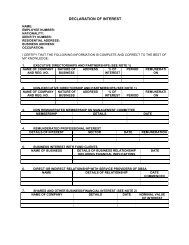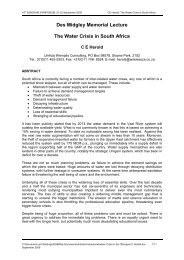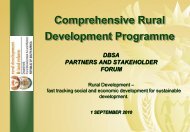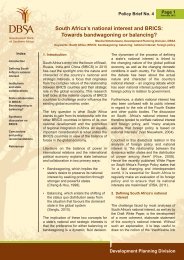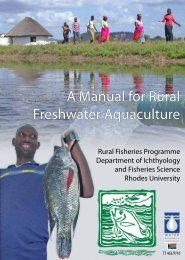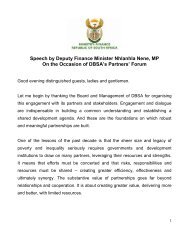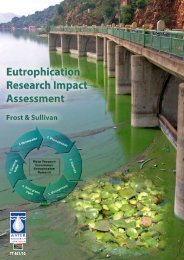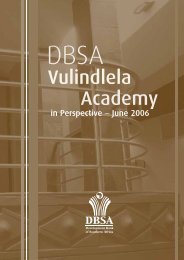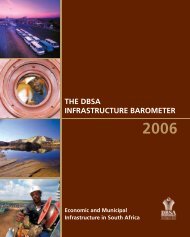A Knowledge Strategy
A Knowledge Strategy
A Knowledge Strategy
You also want an ePaper? Increase the reach of your titles
YUMPU automatically turns print PDFs into web optimized ePapers that Google loves.
Information availability<br />
Opportunities for the provision of information were identified in the following<br />
areas:<br />
• client and country information, especially risk, legal and political (the project<br />
already having been initiated) offering the prospects of high returns;<br />
• project payment administration, budget and disbursement information<br />
available via a CRM application promising high returns;<br />
• a NEPAD advocacy programme also offering high returns;<br />
• regional project progress information offering moderate returns;<br />
• funds mobilisation information; and<br />
• client and project performance related to development impact indicators in<br />
particular.<br />
Information is not uppermost in determining the extent of knowledge.<br />
Nonetheless, the simple need for relevant and accessible information in certain<br />
areas is evident. It is suggested that this is readily deliverable by means of a wellstructured<br />
intranet that integrates existing portals, transparency and an access to<br />
information philosophy.<br />
Peer assist<br />
Numerous opportunities for peer assist were identified all of which offered good<br />
prospects of return on the Bank’s investment:<br />
• client appraisal and early review speeding up the borrower appraisal process;<br />
• proposal preparation and appraisal processes;<br />
• project design and technical assistance processes – internal education on the<br />
Treasury;<br />
• client monitoring process highlighting early warning signs and to be<br />
incorporated into a larger processes (see COP’s);<br />
• client risk rating reviews undertaken by the Risk Management Unit prior to<br />
publication;<br />
• private sector funding – preparation for initial engagement and early review<br />
and initial ratification to identify new business development opportunities;<br />
• project evaluation;<br />
• developing risk management solutions (Risk Management Unit);<br />
• before the private sector funding negotiation phase.<br />
The peer assist process is a learning and risk mitigation tool for important decisions<br />
and for areas of the business where technical skills are at a premium. Certain units<br />
already realise the benefits of peer assistance. It is recommended that the peer-assist<br />
process should be simple and transferable, as it has a high potential to build internal<br />
capacity. The Bank’s ability to conduct peer assists should be developed to the point<br />
where a strong internal cadre of process facilitators exists and the methodology is<br />
entrenched as a way of helping and raising the standard of professionalism. Key in<br />
achieving this is sticking to the peer assist ethos and making sure that participants<br />
are fully recognised for their contribution.<br />
30 Development Bank of Southern Africa



